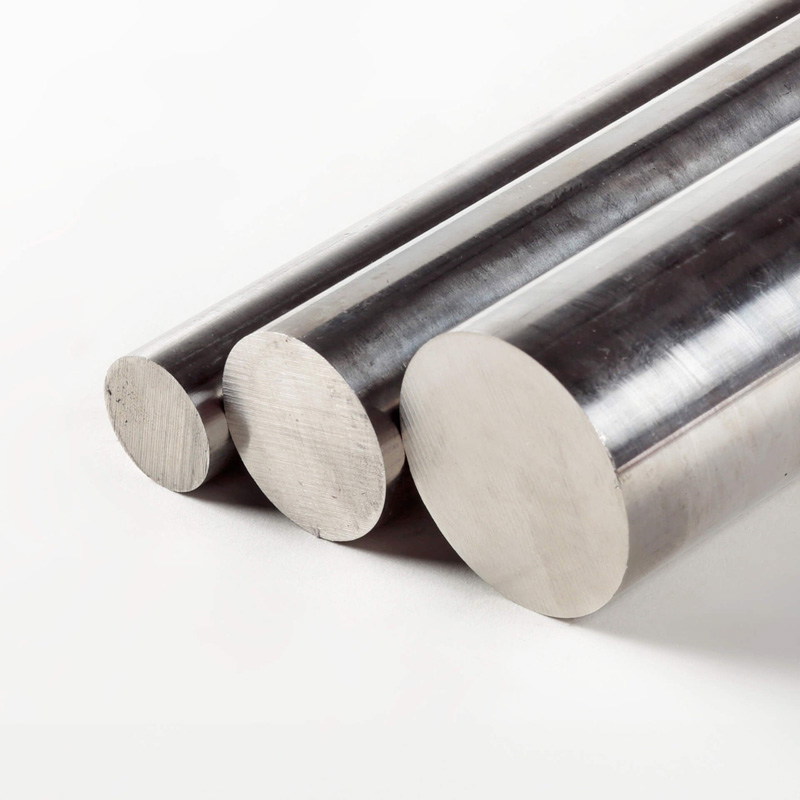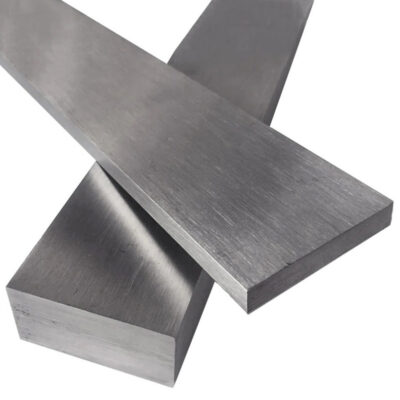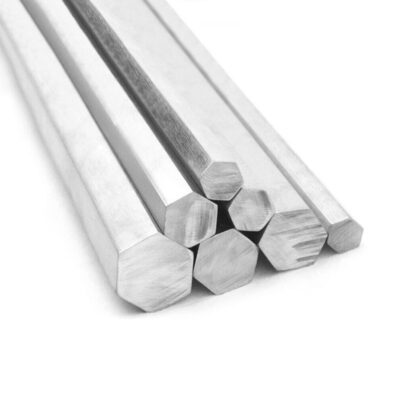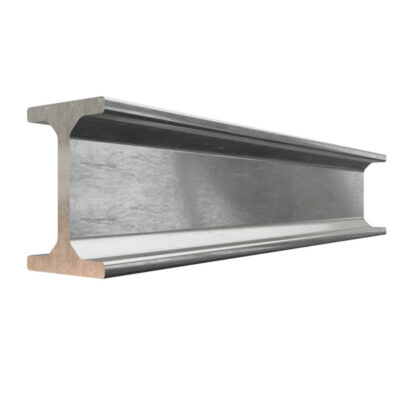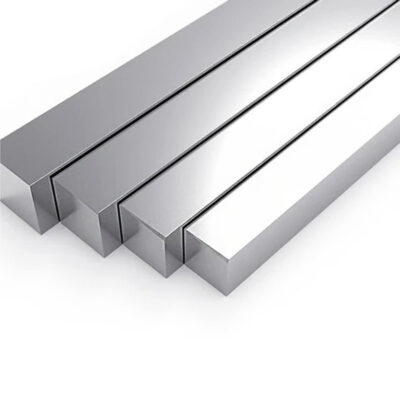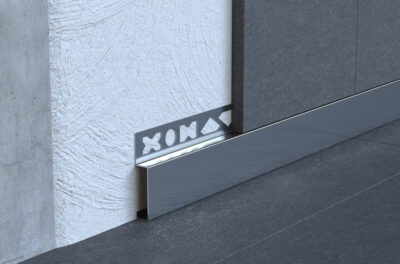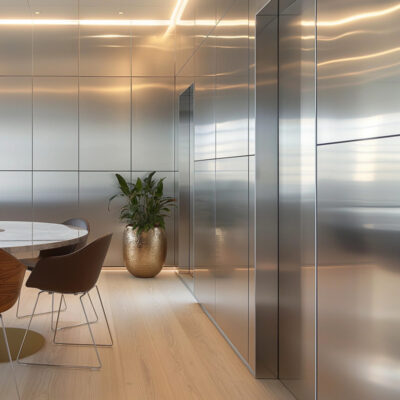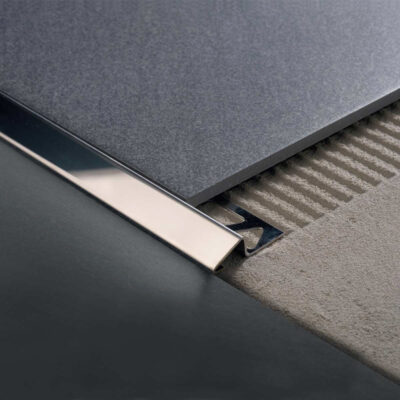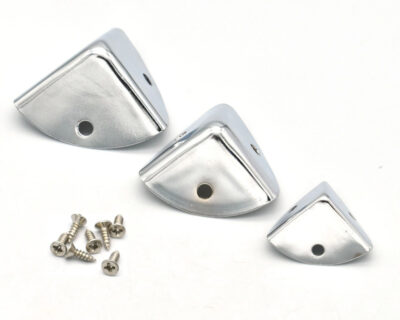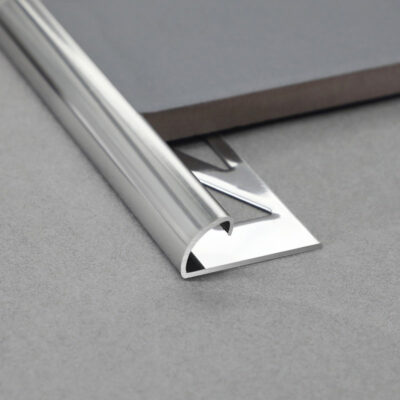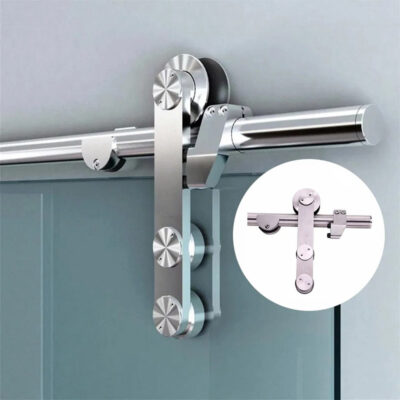Understanding Stainless Steel Round Bars
The first time I handled a stainless steel round bar in a manufacturing facility, I was struck by the distinctive weight and balance that set it apart from standard carbon steel. This wasn’t just another metal product—it was the backbone of countless critical applications where failure simply isn’t an option.
Stainless steel round bars are solid cylindrical lengths of stainless steel characterized by their circular cross-section. What distinguishes them from ordinary steel bars is their chromium content—typically at least 10.5%—which creates a passive chromium oxide layer that protects against corrosion. This self-healing protective film gives stainless steel its remarkable durability and resistance to oxidation, even in harsh environments.
The composition varies significantly between grades, but besides chromium, you’ll typically find varying amounts of nickel, molybdenum, titanium, and other elements that enhance specific properties. Each elemental addition serves a purpose: molybdenum improves pitting resistance, nickel enhances formability, and nitrogen increases strength.
You might wonder about the production volumes—they’re substantial. The global stainless steel long product market (which includes round bars) exceeds 6 million metric tons annually, with round bars representing a significant portion of this volume.
During my discussions with E-Sang specialists, I learned that dimensional accuracy is particularly critical for stainless steel round bars. Unlike some materials where minor variations are acceptable, precision-manufactured stainless rounds often need to maintain tolerances within fractions of a millimeter to ensure proper fit in high-precision applications.
The versatility of stainless steel round bars becomes evident when you consider their diameter range—typically from as small as 3mm up to 250mm or more for specialized applications. This versatility, combined with exceptional corrosion resistance and mechanical properties, explains their ubiquity across industries ranging from aerospace to food processing.
Types and Grades of Stainless Steel Round Bars
Walking through a stainless steel stockyard recently, I was reminded of the vast array of grades available—each rack labeled with different numeric designations that might seem arbitrary to the untrained eye. In reality, these numbers represent careful metallurgical balances designed for specific performance characteristics.
Stainless steel round bars are typically categorized into four main families based on their microstructure:
Austenitic Stainless Steel Round Bars: Making up approximately 70% of global stainless steel production, these non-magnetic grades contain high levels of chromium and nickel. The 300-series—particularly grades 304 (18% Cr, 8% Ni) and 316 (16% Cr, 10% Ni, 2% Mo)—dominates this category. During a recent project consultation, a metallurgist explained to me that 316’s molybdenum content makes it significantly more resistant to chloride environments, which is why it’s often specified for marine applications despite its 15-20% cost premium over 304.
Ferritic Stainless Steel Round Bars: These magnetic stainless steels contain chromium (typically 10.5-30%) but minimal nickel. The most common grades include 430 and 409. They’re less expensive than austenitic grades but offer reduced formability and corrosion resistance. I’ve noticed that manufacturers often select these for indoor structural applications where budgets are tight but some corrosion resistance is still needed.
Martensitic Stainless Steel Round Bars: Distinguished by their ability to be hardened through heat treatment, grades like 410, 416, and 420 contain moderate chromium (11-18%) and higher carbon content. These grades can achieve impressive hardness levels—up to 60 HRC in some cases—making them ideal for applications requiring wear resistance. A toolmaker once showed me how 416 machines beautifully compared to other stainless grades, thanks to added sulfur that improves machinability.
Duplex Stainless Steel Round Bars: These relatively newer grades (like 2205 and 2507) feature a mixed microstructure of approximately 50% austenite and 50% ferrite. This dual-phase structure creates an impressive combination of strength and corrosion resistance. During a failure analysis project, I found that replacing standard 316 with 2205 doubled the tensile strength while improving chloride resistance.
Precipitation Hardening Grades: Though less common in round bar form, grades like 17-4PH and 15-5PH deserve mention. They achieve remarkable strength through aging heat treatments while maintaining good corrosion resistance.
The selection between these grades involves careful consideration of several factors:
| Grade Family | Typical Grades | Corrosion Resistance | Strength | Relative Cost | Best Applications |
|---|---|---|---|---|---|
| Austenitic | 304, 304L, 316, 316L | Excellent | Moderate | Moderate-High | Chemical processing, food equipment, architectural |
| Ferritic | 430, 409, 439 | Good | Moderate | Low-Moderate | Automotive exhaust, indoor structural parts |
| Martensitic | 410, 416, 420, 440C | Fair | High (can be heat treated) | Moderate | Shafts, fasteners, cutting tools, surgical instruments |
| Duplex | 2205, 2507, 2304 | Excellent (especially to chlorides) | Very High | High | Offshore, chemical processing, pressure vessels |
| PH Grades | 17-4PH, 15-5PH | Good | Extremely High | Very High | Aerospace components, high-stress applications |
What’s rarely discussed is how these grades behave differently during processing. For instance, I’ve witnessed how austenitic grades work-harden significantly during machining, sometimes nearly doubling in hardness, which can lead to unexpected tool wear. Meanwhile, ferritic grades remain relatively stable during cutting operations.
Manufacturing Processes and Quality Standards
The journey from raw material to finished stainless steel round bar involves several sophisticated processes—each affecting the final properties in ways that aren’t always obvious. During a recent facility tour, I was struck by the contrast between the raw billets entering one end of the production line and the precisely dimensioned, mirror-finished bars emerging from the other.
The primary manufacturing methods include:
Hot Rolling: The process begins with heating stainless steel billets to temperatures between 1100°C and 1300°C, making them malleable enough to be formed. These glowing billets then pass through a series of rolling stands that progressively reduce their diameter. I’ve stood near these rolling operations—the heat is intense, and the speed impressive. Hot rolled bars typically have a rough, scaled surface finish and less precise dimensions, but the process is cost-effective for larger diameter bars.
Cold Drawing: For enhanced dimensional accuracy and improved surface finish, hot rolled bars often undergo cold drawing. This involves pulling the bar through a die of smaller diameter without preheating. The material strain-hardens during this process, increasing strength but potentially reducing ductility. A production engineer once explained to me that each “pass” through progressively smaller dies increases strength by approximately 10-15%, but eventually requires annealing if further reduction is needed.
Heat Treatment: Depending on the grade and intended application, various heat treatments might be applied:
- Annealing: Heating to 1010-1120°C followed by controlled cooling to restore ductility
- Solution treatment: Heating austenitic grades to dissolve carbides and enhance corrosion resistance
- Quenching and tempering: For martensitic grades to develop optimal hardness
- Precipitation hardening: For PH grades to develop strengthening precipitates
Surface Finishing: The final appearance and performance often depend on surface treatments:
- Centerless grinding: For precise diameter control (tolerances as tight as ±0.013mm)
- Polishing: For improved appearance and reduced friction
- Peeling/turning: To remove surface defects
- Pickling: Chemical treatment to remove scale and enhance corrosion resistance
These manufacturing processes must conform to rigorous quality standards that vary by industry and application. Some of the most commonly referenced standards include:
| Standard | Organization | Coverage | Typical Applications |
|---|---|---|---|
| ASTM A276/A276M | American Society for Testing and Materials | Chemical composition, mechanical properties | General purpose stainless steel bars |
| ASTM A479/A479M | ASTM | Higher quality requirements for pressure vessels | Nuclear, chemical processing |
| EN 10088-3 | European Committee for Standardization | Comprehensive European standard for stainless steel semi-finished products | Various European applications |
| JIS G4303 | Japanese Industrial Standards | Japanese specifications for stainless steel bars | Japanese domestic and export markets |
| ASME SA479 | American Society of Mechanical Engineers | Pressure vessel and boiler applications | Critical pressurized systems |
What I’ve found noteworthy is how these standards continue to evolve. During a recent specification review, a quality manager pointed out that newer standards now include more detailed requirements for inclusion content and grain size—factors that significantly impact fatigue resistance but weren’t consistently controlled in older specifications.
Quality testing for stainless steel round bars typically includes chemical analysis, mechanical testing (tensile, hardness, impact), non-destructive testing (ultrasonic, eddy current, magnetic particle), and dimensional verification. Modern facilities increasingly implement real-time monitoring during production, catching potential issues before they become problematic.
Key Applications Across Industries
I recently visited a stainless steel distributor’s warehouse and was fascinated by the diversity of customers—from shipbuilders to medical device manufacturers—all sourcing essentially the same product for wildly different applications. This versatility stems from stainless steel round bars’ unique combination of properties that make them indispensable across numerous sectors.
Aerospace and Defense: In these demanding environments, precipitation hardening grades like 17-4PH and 15-5PH dominate. I’ve examined landing gear components manufactured from these materials, where their combination of high strength (up to 1100 MPa yield strength) and good corrosion resistance proves ideal. For less critical applications, 304 and 321 provide good performance at lower cost. The exacting standards in aerospace typically require additional testing beyond standard certifications—including 100% ultrasonic inspection for critical components.
Oil and Gas Industry: Perhaps nowhere are the corrosion-resistant properties of stainless steel round bars more critical than in offshore and downhole applications. While working on a North Sea platform upgrade, I observed how duplex grades like 2205 and super duplex 2507 have become standard for pump shafts, fasteners, and instrumentation components. These environments combine high chloride content, elevated temperatures, and mechanical stress—conditions that would rapidly destroy lesser materials.
Food and Pharmaceutical Processing: The biocompatibility and cleanability of austenitic stainless steels make them mandatory in these hygiene-critical applications. Grade 316L is particularly prevalent due to its resistance to cleaning chemicals. During a dairy processing plant tour, the plant engineer explained how even minor corrosion in processing equipment could contaminate entire production batches, making the premium for high-quality stainless steel insignificant compared to the risk.
Architecture and Construction: Beyond structural applications, stainless steel round bars find widespread use in handrails, barrier systems, and decorative elements. I was surprised to learn during a restoration project that some stainless steel architectural elements installed in the 1920s remain in excellent condition nearly a century later—testament to their longevity.
Automotive Industry: While not as visible as in other sectors, stainless steel round bars are crucial components in vehicle exhaust systems (typically 409 or 439 grades), fuel injection systems (typically martensitic grades for wear resistance), and increasingly in structural elements of electric vehicles, where their non-magnetic properties become advantageous.
Medical Equipment: The biocompatibility of certain stainless grades (particularly 316L) makes them ideal for surgical instruments and implantable devices. In a surgical instrument manufacturing facility I toured, the quality manager emphasized that their material selection process was among the most rigorous in any industry—with complete traceability from melt to final component required.
Marine Applications: Ships, offshore platforms, and port infrastructure represent particularly challenging environments. While 316 and 316L have historically been the go-to choices, I’ve observed increasing adoption of duplex grades in recent years as operators push for longer service life between maintenance periods.
Nuclear Industry: Perhaps the most demanding application environment is nuclear power generation, where materials can face radiation exposure, thermal cycling, and potential contact with corrosive media. Here, specialized grades like 316L(N) with controlled nitrogen content and enhanced purity requirements are often specified.
The failure consequences in many of these applications can be catastrophic—from aircraft component failure to pharmaceutical contamination—which explains the rigorous testing and certification requirements that accompany stainless steel round bars in critical applications.
Technical Specifications and Selection Criteria
During a recent consulting project, an engineer showed me a failed shaft that had been incorrectly specified. “We thought stainless steel was just stainless steel,” he admitted ruefully. This common misconception overlooks the critical technical nuances that distinguish different stainless steel round bar products and determine their suitability for specific applications.
Dimensional Specifications
The diameter range for commercially available stainless steel round bars typically spans from 3mm to 250mm, though specialty producers can accommodate sizes outside this range. Bars are commonly available in standard lengths of 3m or 6m, with custom lengths available upon request.
Dimensional tolerances vary by manufacturing method and diameter:
| Manufacturing Process | Diameter Range | Typical Diameter Tolerance | Surface Finish Ra (μm) |
|---|---|---|---|
| Hot Rolled | 25-250mm | ±1% of diameter | 3.2-6.3 |
| Cold Drawn | 3-75mm | h9 (±0.030-0.074mm) | 0.8-3.2 |
| Centerless Ground | 3-80mm | h7 (±0.010-0.030mm) | 0.2-0.8 |
| Precision Ground | 3-50mm | h6 (±0.006-0.016mm) | 0.1-0.4 |
Straightness is another critical specification, typically measured as maximum deviation over a specified length. For precision applications, this might be limited to 0.3mm per meter, while general-purpose applications might allow up to 2mm per meter.
Mechanical Properties
When selecting stainless steel round bars, mechanical properties often drive the decision process:
- Tensile Strength: Ranges from approximately 500 MPa for annealed austenitic grades to over 1400 MPa for hardened martensitic and PH grades
- Yield Strength: Typically 40-50% of tensile strength for annealed austenitic grades, but much higher percentages for other families
- Elongation: A measure of ductility, ranging from 10-12% for high-strength martensitic grades to over 40% for annealed austenitic grades
- Hardness: Often specified in HB (Brinell) or HRC (Rockwell C) scales, with values from 160-200 HB for annealed austenitic grades to over 45 HRC for hardened martensitic grades
What’s rarely discussed is how dramatically cold work affects these properties. During a metallurgical investigation, I observed how cold drawn 304 exhibited nearly double the yield strength of its annealed counterpart—a factor that must be considered during design calculations.
Corrosion Resistance Considerations
Selecting appropriate stainless steel round bars requires understanding the specific corrosion mechanisms present in the application environment:
- General Corrosion: Uniform dissolution of the surface, typically measured as mm/year
- Pitting Corrosion: Localized attacks creating small holes in the material, especially in chloride environments
- Crevice Corrosion: Similar to pitting but occurring in tight spaces where oxygen differential cells can form
- Stress Corrosion Cracking (SCC): The combined effect of tensile stress and corrosive environment causing cracks
- Galvanic Corrosion: Occurs when dissimilar metals are in electrical contact in an electrolyte
A chemical engineer once shared with me a valuable rule of thumb for marine applications: “For every 2% molybdenum you add to stainless steel, you roughly double the chloride concentration it can withstand.” This explains the progression from 304 (0% Mo) to 316 (2-3% Mo) to super duplex (3-4% Mo) for increasingly aggressive environments.
Surface Finish Options
Surface finish affects not just aesthetics but also corrosion resistance, friction characteristics, and fatigue performance:
- #1 Finish: Hot rolled, annealed, and pickled (Ra 3.2-6.3 μm)
- #2B Finish: Cold rolled, annealed, pickled, and lightly rolled (Ra 0.8-1.6 μm)
- Bright Drawn: Smooth, reflective finish from drawing dies (Ra 0.8-1.0 μm)
- Ground and Polished: Precision surface with consistent dimensions (Ra varies by specification)
- Peeled/Turned: Mechanically removed outer layer for improved surface quality
Selection Methodology
When consulting on material selection, I typically recommend a systematic approach:
- Identify environmental conditions (temperature ranges, chemical exposure, humidity)
- Determine mechanical requirements (static and dynamic loading, fatigue considerations)
- Consider manufacturing processes (machining requirements, welding needs)
- Evaluate economic constraints (initial cost vs. life-cycle cost)
- Review relevant codes and standards for the application
- Assess availability in required dimensions and quantities
A materials engineer once told me something that’s stuck with me: “The most expensive stainless steel is the one that fails prematurely.” This wisdom underscores the importance of proper material selection beyond initial cost considerations.
Advantages of Stainless Steel Round Bars
I still recall a conversation with a maintenance supervisor at a coastal chemical plant who told me, “We replaced those carbon steel shafts every two years like clockwork. When we switched to 316, that was fifteen years ago—they’re still in service.” This anecdote perfectly illustrates the compelling advantages that stainless steel round bars offer across applications.
Exceptional Corrosion Resistance
The defining characteristic of stainless steel round bars is undoubtedly their ability to resist corrosion in environments that would rapidly degrade other materials. This stems from the chromium oxide passive film that forms spontaneously on the surface—remarkably, this protective layer is only 1-3 nanometers thick, yet it provides comprehensive protection.
What makes this corrosion resistance particularly valuable is its persistence across diverse environments:
- Atmospheric exposure (urban, industrial, and marine)
- Fresh water and steam systems
- Organic and inorganic chemicals
- Food products and biological environments
- Cryogenic temperatures to high-temperature service
During a failure analysis project in a paper mill, I examined components that had been exposed to bleaching chemicals for over a decade. While the carbon steel supports had corroded severely, the 316 stainless components remained dimensionally unchanged—demonstrating the dramatic life-cycle cost advantages despite higher initial investment.
Mechanical Properties and Performance
The mechanical versatility of stainless steel round bars allows them to meet diverse requirements:
- Yield strengths ranging from 170 MPa (annealed austenitic) to over 1000 MPa (hardened PH grades)
- Good ductility in austenitic grades (40%+ elongation) allowing for forming operations
- Excellent impact resistance, even at cryogenic temperatures for austenitic grades
- Good fatigue resistance, particularly when properly finished and passivated
- Ability to maintain strength at elevated temperatures
What surprised me during testing was how well austenitic stainless steels perform in cryogenic environments where many materials become dangerously brittle. At -196°C (liquid nitrogen temperature), 304 stainless maintains its toughness and actually increases in strength—a property that makes it indispensable in cold temperature applications.
Aesthetic Appeal and Hygiene
Beyond functional benefits, stainless steel round bars offer aesthetic advantages:
- Attractive metallic appearance ranging from satin to mirror-like finishes
- Ability to maintain appearance without additional coatings
- Resistance to staining and discoloration
- Clean, modern look that architects and designers value
The non-porous surface resists bacterial growth and is easily sanitized, making stainless particularly valuable in medical, pharmaceutical, and food processing applications. During a brewery tour, the head engineer explained that their transition to all-stainless contact surfaces had dramatically reduced contamination risks and simplified their cleaning procedures.
Sustainability Advantages
Stainless steel round bars offer compelling sustainability benefits:
- Typical recycled content exceeds 60% in new production
- Fully recyclable at end of life with no degradation in properties
- Long service life reduces replacement frequency and associated environmental impacts
- No need for environmentally problematic coatings or treatments
- Lower maintenance requirements reduce lifetime resource consumption
A life cycle assessment study I reviewed demonstrated that despite the higher embodied energy in stainless steel production, the total environmental impact over a 30-year service life was significantly lower than alternatives requiring replacement or maintenance.
Fabrication Versatility
Stainless steel round bars can be processed using virtually all common fabrication methods:
- Excellent machinability (especially free-machining grades like 303 and 416)
- Good weldability (particularly austenitic grades)
- Compatibility with various joining methods
- Ability to be threaded, bent, and formed as needed
This versatility allows stainless steel round bars to be easily integrated into complex assemblies and manufacturing processes across industries.
Challenges and Limitations
Despite the impressive advantages of stainless steel round bars, they’re not without their challenges. During a particularly frustrating project involving precision components, a master machinist remarked to me, “Stainless gives you beautiful parts that last forever—if you can survive making them.” This sentiment captures the occasional love-hate relationship that manufacturers have with these materials.
Cost Considerations
Perhaps the most significant barrier to wider adoption is cost. Stainless steel round bars command a substantial premium over carbon steel alternatives:
- Austenitic grades typically cost 3-5 times more than carbon steel equivalents
- Specialty grades like super duplex or high-nickel alloys can cost 8-12 times more
- Price volatility affects project planning—during one recent project, we saw a 30% price swing within six months due to nickel market fluctuations
This cost differential must be justified through life-cycle analysis rather than initial investment comparison. However, I’ve found that many procurement systems still focus predominantly on acquisition cost rather than total cost of ownership, creating artificial barriers to appropriate material selection.
Manufacturing Challenges
Working with stainless steel round bars presents several significant processing challenges:
Work Hardening: Austenitic grades work-harden rapidly during machining, which can lead to tool failure if not properly managed. I’ve seen inexperienced operators ruin expensive tools by failing to adjust feed rates and speeds appropriately.
Heat Dissipation: Stainless steel conducts heat poorly (thermal conductivity roughly 1/3 that of carbon steel), causing heat buildup during machining. This can lead to dimensional issues and accelerated tool wear.
Tool Wear: The abrasive nature of stainless steel, combined with work hardening and poor heat dissipation, results in accelerated cutting tool wear. A production manager once showed me comparative tool life data: the same carbide insert that lasted for 300 carbon steel parts produced only 80 similar stainless steel components.
Welding Complications: While generally weldable, stainless steels require specific procedures to prevent issues like carbide precipitation, sigma phase formation, and hot cracking. During a critical repair project, we discovered that the standard welding procedure that had worked perfectly for years suddenly produced cracked welds—traced back to a slight composition change within the allowable specification range.
Technical Limitations
Certain inherent properties of stainless steel round bars limit their application:
Magnetic Permeability: Most austenitic grades are non-magnetic in the annealed condition but can develop magnetism when cold worked. This can create issues in applications where magnetic properties must be strictly controlled.
Thermal Expansion: Austenitic stainless steels have approximately 50% higher thermal expansion rates than carbon steel, which can create design challenges in applications with temperature fluctuations or mixed-material assemblies.
Stress Corrosion Cracking Susceptibility: Despite excellent general corrosion resistance, certain stainless steels are vulnerable to stress corrosion cracking in specific environments. I investigated a catastrophic failure where 304 stainless fasteners failed unexpectedly due to this mechanism in a warm chloride environment—a situation where the superficially similar (but more resistant) 316 would have performed adequately.
Galling Tendency: Stainless steel surfaces in sliding contact can exhibit severe galling—a form of adhesive wear that can lead to seizing. I once examined a failed valve where identical stainless steel components had essentially cold-welded together during operation, rendering the valve inoperable.
Supply Chain Considerations
The specialized nature of stainless steel round bars creates supply chain vulnerabilities:
- Limited number of producers for specialty grades
- Longer lead times than carbon steel equivalents (often 8-12 weeks for uncommon sizes or grades)
- More complex material certification requirements
- Greater difficulty in sourcing emergency replacements
During a critical maintenance shutdown, we discovered that the specified duplex stainless bar stock would require 14 weeks for delivery—ultimately requiring a design modification to use an available alternative material.
Future Trends and Innovations
Standing in a metallurgical laboratory recently, I watched researchers testing a new lean duplex stainless steel formulation. “We’re trying to build a better material that needs less nickel but performs like traditional duplex grades,” the lead metallurgist explained. This work represents just one facet of the ongoing evolution in stainless steel round bar technology.
Material Development Trends
The push for improved performance is driving several material development directions:
Lean Duplex Alloys: These newer formulations maintain much of the strength and corrosion resistance of standard duplex grades but with reduced nickel content (typically 1.5-4% vs. 5-7%). During field trials at a desalination plant, I observed how these materials performed remarkably well despite their cost advantage over traditional duplex grades. The most popular variant, LDX 2101 (UNS S32101), offers approximately 90% of the performance of 2205 at roughly 80% of the cost.
High-Nitrogen Stainless Steels: Nitrogen as an alloying element enhances strength and corrosion resistance simultaneously. Grades like 22Cr-12Ni-5Mn-2.5Mo with enhanced nitrogen (0.4-0.5%) show exceptional pitting resistance while maintaining good fabricability. A materials engineer demonstrated how these alloys maintain their mechanical properties even after extended exposure to high temperatures—a significant advantage for certain industrial applications.
Powder Metallurgy (PM) Grades: Using powder metallurgy techniques, manufacturers can now create stainless steel round bars with more uniform microstructures and controlled inclusion content. The resulting materials offer improved fatigue resistance and machinability. What impressed me during a demonstration was the consistent properties throughout the cross-section, even in larger diameters where traditional production methods sometimes result in property variations.
Advanced Manufacturing Processes
Production technology is evolving to address traditional challenges:
Enhanced Surface Finishing Techniques: New electropolishing methods combined with mechanical polishing create surfaces with Ra values below 0.1μm with extreme consistency. These surfaces demonstrate dramatically improved corrosion resistance and reduced biofilm formation—critical for pharmaceutical and medical applications.
Additive Manufacturing Integration: While complete 3D printing of large stainless steel round bars remains impractical, hybrid approaches are emerging. I recently examined components where complex end features were additively manufactured directly onto standard stainless round bar stock, eliminating costly machining operations and reducing material waste by up to 85%.
Real-time Quality Monitoring: Advanced mills now incorporate continuous monitoring systems that use eddy current, ultrasonic, and laser measurement technologies to verify dimensional and internal quality throughout production. This allows for immediate corrective action rather than post-production quality control, significantly reducing rejection rates.
Market and Application Shifts
Several market trends are reshaping the stainless steel round bar landscape:
Hydrogen Economy Infrastructure: The rapid development of hydrogen as an energy carrier is creating demand for materials compatible with hydrogen production, storage, and transport. Certain austenitic and duplex stainless grades demonstrate excellent hydrogen compatibility, positioning them as key materials in this growing sector.
Advanced Energy Systems: Next-generation nuclear designs, concentrated solar power, and geothermal systems all present extreme operating environments where specialized stainless steel round bars offer enabling properties. During a recent renewable energy conference, I noted the significant research funding directed toward qualifying materials for these demanding applications.
Increased Demand for Traceability: End users increasingly require comprehensive material traceability from melt to final component. Advanced digital tracking systems now allow each heat of material to be traced throughout its entire supply chain—a capability that traditional materials often cannot match.
Sustainability Focus: Environmental considerations are driving interest in the life cycle assessment of materials. Stainless steel’s durability and recyclability position it favorably in this analysis, though the high initial energy requirements for production remain a challenge. Several producers are investing in electric arc furnace technology powered by renewable energy to address this concern.
The most significant trend I’ve observed is the growing emphasis on material-specific expertise. As applications become more demanding, the days of generic “stainless steel” specifications are giving way to precise grade selection based on sophisticated performance modeling and testing. This shift demands greater metallurgical knowledge among engineers and designers but ultimately results in more reliable, cost-effective applications of these versatile materials.
Conclusion: Making the Right Selection
Throughout my years working with stainless steel round bars across various industries, I’ve come to appreciate that material selection is rarely straightforward. The right choice emerges from balancing multiple competing factors—technical requirements, fabrication considerations, economic constraints, and availability.
For critical applications, I recommend a methodical approach that begins with a thorough analysis of the operating environment. Document temperature ranges, chemical exposures, mechanical loads, and any unusual conditions the material will face. This baseline understanding helps narrow the field of potential candidates substantially.
Next, consider the manufacturing processes required. Will the material need extensive machining? Will it be welded? Are tight tolerances required? These factors might steer you toward free-machining grades like 303 for complex machined parts, or toward grades with excellent weldability like 304L for fabricated assemblies.
Economic analysis should extend beyond purchase price to include fabrication costs and expected service life. In many cases, I’ve found that investing in a more corrosion-resistant grade (moving from 304 to 316, for instance) may increase material costs by 15-20% but double or triple the expected service life—a compelling value proposition when installation or replacement costs are significant.
Availability considerations become increasingly important as projects scale up or when maintenance needs arise unexpectedly. Working with established suppliers who maintain inventory of common sizes and grades provides valuable flexibility. For critical applications, consider qualifying multiple sources or identifying acceptable alternative materials in advance.
What I’ve found most valuable is consulting with metallurgical specialists early in the design process. Their insights can help identify potential issues before they become costly problems. Many suppliers offer technical consultation services that can prevent expensive missteps.
Perhaps most importantly, recognize that stainless steel round bars are not commodity products where the lowest price should dictate selection. The differences between grades and suppliers can significantly impact performance, sometimes in ways that aren’t immediately obvious until failure occurs. The old adage that “the bitterness of poor quality remains long after the sweetness of low price is forgotten” applies particularly well to these materials.
As applications continue to push into more demanding environments—higher temperatures, more aggressive chemicals, greater mechanical stresses—the selection of appropriate stainless steel round bars becomes increasingly
Frequently Asked Questions about Stainless Steel Round Bars
Introduction to Stainless Steel Round Bars
Q: What are Stainless Steel Round Bars, and how are they used?
A: Stainless Steel Round Bars are cylindrical rods made from stainless steel, known for their durability, corrosion resistance, and versatility. They are used extensively across various industries such as construction, automotive, marine, and decorative fixtures due to their strength and low maintenance requirements.
Selection Criteria
Q: How do I choose the right Stainless Steel Round Bar for my project?
A: Choosing the right Stainless Steel Round Bar depends on several factors:
- Corrosion Resistance: Consider the level of corrosion resistance needed based on the environment it will be used in.
- Mechanical Stress: Assess the mechanical stresses the bar will need to withstand.
- Aesthetics: If appearance matters, select a grade that offers smooth finishes.
- Grade: Common grades include austenitic, ferritic, martensitic, and duplex, each with unique properties.
Applications and Advantages
Q: What are the typical applications of Stainless Steel Round Bars?
A: Stainless Steel Round Bars are utilized in a wide range of applications:
- Construction: Structural support and framing.
- Automotive: Parts in vehicles.
- Marine: Boating accessories due to their resistance to saltwater corrosion.
- Decorative Use: Railings and architectural trims.
They are ideal due to their high strength, corrosion resistance, and aesthetic appeal.
Care and Maintenance
Q: How should I maintain Stainless Steel Round Bars?
A: Maintaining Stainless Steel Round Bars involves regular cleaning with mild detergents to preserve their appearance and longevity. Although stainless steel is corrosion-resistant, certain environmental factors can cause surface damage if not properly cared for.
Manufacturing Processes
Q: How are Stainless Steel Round Bars manufactured?
A: Stainless Steel Round Bars are often manufactured through a process called cold drawing, where the stainless steel is formed into its final shape at room temperature. This process enhances the material’s mechanical properties and reduces surface imperfections.
Standard Lengths and Sizes
Q: What are the standard lengths and sizes of Stainless Steel Round Bars?
A: Stainless Steel Round Bars come in various standard lengths, typically 12 feet long, though they can be cut to specific requirements. Sizes vary from a few millimeters to several inches in diameter, catering to different industrial needs.

